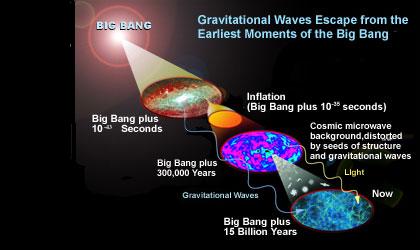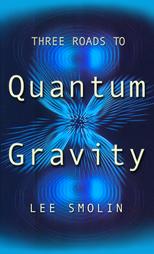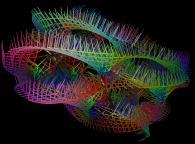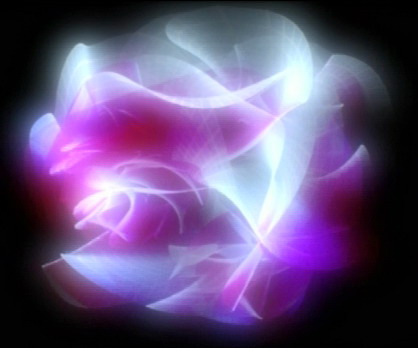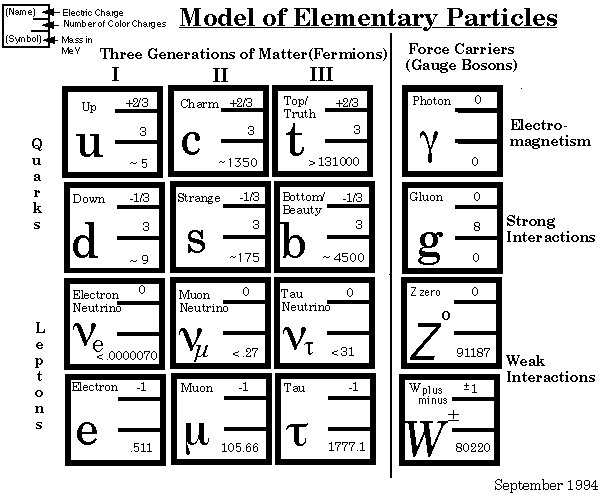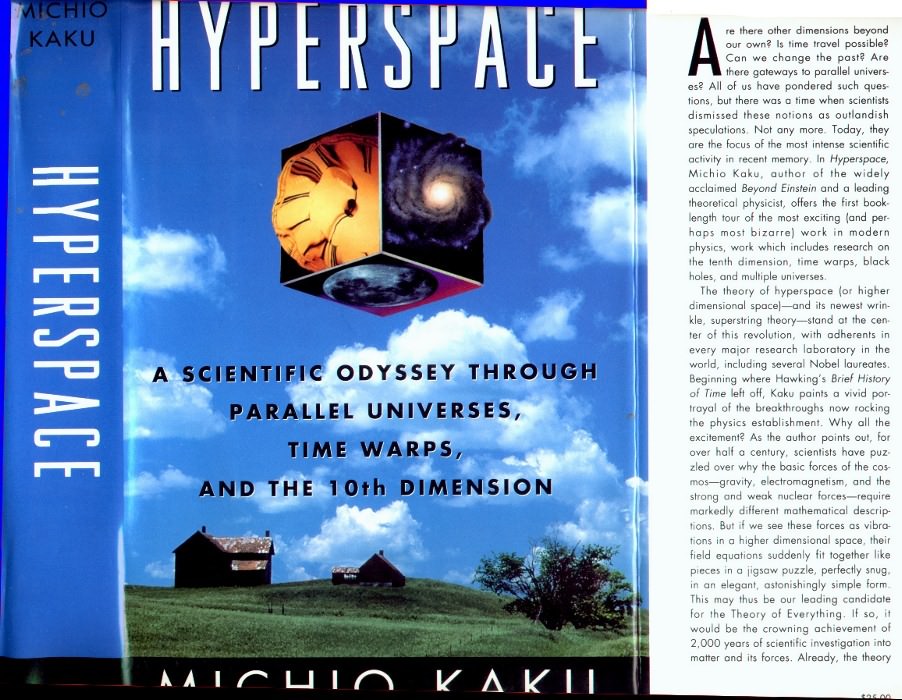Is Our Universe Inside A Black Hole?
Daughter Universe Theory Expanded
Professor Stephen Hawkings is credited as speculating that our universe was created by the
explosion of a blackhole known as the "Big Bang". I would like you to consider that some
scientific evidence exist that our unverse is actually inside a black hole; located just
inside the event horizon and exist as sort of a membrane on a 3d matrix which was created when a massive star collapsed long ago. I assumed this question bordered on scientific
heresy and was recently shocked to learn there is a conference on this general topic entitled "Conference on Daughter Universes" is
being held as this idea is being formulated on the internet. As we embark on this exploration into reality it is important to remember as Professor Lee Smolins
explained in his book Three Road to Quantum Gravity that the universe as we see it is is
vastly different from what actually occurs on the quantum level.

Kvali Institutie For Theoritical Physics
University of California
Professor Gary Horowizt
Physics Department
Broida Hall room 6239
University of California
Santa Barbara, CA 93106
(805) 893-2742
Conference on Daughter Universe
Kavli Institute for Theoritical Physics
Hard to believe a conference on this general topic entitled "Conference on Daughter Universes" is
being held as this idea is being formulated on the internet. The Conference has speakers reviewing the operation of Singularities and some of the ideas
that the singularities might contain "Daughter Universes". The idea that our universe might a "Daughter Universe" and inside a black hole is being studied on this website.
Big Bang Creation Of Universe
Singularity or Daughter Universe?
Can we consider the possibility that the "Big Bang" was not the explosion of a
massive black hole but the collapse of a massive star which we view from inside the
event horizon of a black hole or singularity as the creation of our universe? If
this idea is correct our vast and endless universe is according to quantum physics
a single point in space known as a singularity. Some modern theories explain this
process as a Daughter Universe which is currently being reviewed in a conference
"KITP Miniprogram: The Quantum Nature of Spacetime Singularities (January 8-26, 2007)
Martin Bojowald, Robert H. Brandenberger, Gary T. Horowitz, Hong Liu"
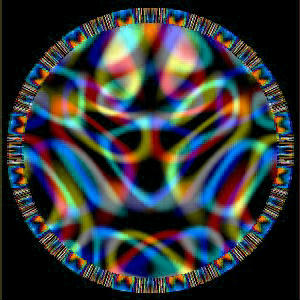
PBrane Theory Strings On Holographic Brane
The Universe as a 3d Holograph?
Expected Operation of The
Universe In The Proposed Theory
1. While our universe seems vast, endless and billions of light years long
it is in quantum reality membrane on a 3 dimensional or holographic film just inside
the event horizon of a blackhole or singularity existing in a "parent universe" created
by the "big bang":
2. This Link discusses intersection of the event horizon
from our parent universe with our universe and it's daughter universes at the Plank level inside the
"Event Horizon
3. This link reviews strings, brances, the Klauz/Klein structures and dimensions intersect at the or below the Plank
Level with the inside of the "Event Horizon".
3. Nothing can go faster than the speed of light in our universe because it would have to escape from the
surface of the blackhole or event horizon into the parent universe which it can't generally do.
4. We will also explain why Hawkings radiation occurs as a particle hit the event horizon outside our
daughter universe briefly appear and then diappear again
5. Why particle entanglement occurs because every point in time and space are co-located at
the quantum level
6. This link discusses how the event horizon creates a weak and superstrong gravity and other matters
Extra Dimensions In String Theory
Intersect With Event Horizon
This Link discusses the possibility that the strings/extra dimensions/and
event horizon of our parent blackhole intersect at about the Planck level 10 (Minus 39).
This is visualized as extra dimensions as being small or curled up it is possible that this effect is simply caused
where the intersections of the 3 triangles occur. In this theory the additional dimensions
can be enormous or infinite and the Higgs Boson and other super partners might be quite
large.
Professor John Gribbin in The Search for Superstrings, Symmetry, and the Theory of Everything explains
on pages 115-118 that Nambus string theory describes strings as 10(minus 13cm). the Kaluza Klein theory
however describes every point in space time as a little loop at 10 (minus 32cm) with 11 dimensions.
As the figure above suggest the intersection of the 3 triangles representing extra
dimensions in our universe converge on the inside at the event horizon which some sources
describe as (10-33 CM). This is visualized as extra dimensions as being small or curled up it is possible that this effect is simply caused
where the intersections of the 3 triangles occur. In this theory the additional dimensions
can be enormous or infinite and the Higgs Boson and other super partners might be quite
large.
Kaluza Klein Theory
& Calabi-Yau Manifold
This Link discusses
Kaluz/Klein Circles on a matrix at Nova's Elegant Universe on the string theory as cited: "In 1919, Polish mathematician
Theodor Kaluza proposed that the existence of a fourth spatial dimension might allow
the linking of general relativity and electromagnetic theory. The idea, later refined by the Swedish mathematician
Oskar Klein, was that space consisted of both extended and curled-up dimensions. The extended dimensions are the
three spatial dimensions that we're familiar with, and the curled-up dimension is found deep within the extended
dimensions and can be thought of as a circle. Experiments later showed that Kaluza and Klein's curled-up dimension
did not unite general relativity and electromagnetic theory as originally hoped, but decades later, string theorists
found the idea useful, even necessary.
The mathematics used in superstring theory requires at least 10 dimensions. That is, for the equations that describe
superstring theory to begin to work out—for the equations to connect general relativity to quantum mechanics, to explain
the nature of particles, to unify forces, and so on—they need to make use of additional dimensions. These dimensions,
string theorists believe, are wrapped up in the curled-up space first described by Kaluza and Klein. To extend the
curled-up space to include these added dimensions, imagine that spheres replace the Kaluza-Klein circles. Instead of
one added dimension we have two if we consider only the spheres' surfaces and three if we take into account the space
within the sphere. That's a total of six dimensions so far. So where are the others that superstring theory requires?
It turns out that, before superstring theory existed, two mathematicians,
Eugenio Calabi of the University of Pennsylvania
and Shing-Tung Yau of Harvard University, described six-dimensional geometrical shapes that superstring theorists say fit
the bill for the kind of structures their equations call for. If we replace the spheres in curled-up space with these
Calabi-Yau shapes, we end up with 10 dimensions: three spatial, plus the six of the Calabi-Yau shapes, plus one of time.
If superstring theory turns out to be correct, the idea of a world consisting of 10 or more dimensions is one that we'll
need to become comfortable with. But will there ever be an explanation or a visual representation of higher dimensions
that will truly satisfy the human mind? The answer to this question may forever be no. Not unless some four-dimensional
life-form pulls us from our three-dimensional Spaceland and gives us a view of the world from its perspective.

Figure 5 Theory of 10 Dimensional
& Strings Vibrations
Does String Theory
Explain Missing Mass Of Universe
Professor Michio Kaku explains in his book
"Hyperspace" the theory
of strings on page 153: "String theory answers this question because the sting, about 100 billion billion times
smaller than a proton is vibrating; each mode of vibration represenats a distinct
resonance of particle. The string is so incredibly tiny that, from a distance
a resonance of a string and a particle are indistinguishable. Only when we somehow
magnify the particle can we see that this is not a point at all, but a mode of
vibrating string..... According to string theory, if we could somehow magnify a
point particle we would actually see a small vibrating string. In fact, according to this
theory, matter is nothing but the harmonies created by this vibrating string. Since there
are an infinite number of harmonies that can be composed for the violin, there are
an infinite number of forms of matter than can be constructed from our of vibrating
strings.... Professor Michio Kaku in his
excellent book "Hyperspace" presents superstring theory and concepts of multiple universes in the "N Dimensions" and
scientist are missing an 80% of the mass of the universe. If you a Scientist and have to admit
that a large part of the universe is missing requires some explanations. Scientist are considering that the "missing matter" or
dark matter" might be present in another universe of dimension.

Figure 13 Professor Stephen Hawkings
DAMTP University of Cambridge
Link to PBS
The Creation of Virtual Particles As
Hawkings Radiation Inside The Event Horizon
The creation of virtual particles is where mass is created and destroied in "empty space".
Professor Stephen Hawkins however describes a similar process as Hawkings Radiation we
are going to borrow to explain creation of virtual particles and mass. In this theory
every point in space in our universe is correct to the inside of the event horizon of
our resident black hole. As matter ourside the event horizon collides with the singularity
is causes matter to appear without apparent cause into our universe. Matter also
evaporates from our black hole to disappear across the event horizon and also into
daughter universes.
Supersymetry & Matter
Has Flavor And Color
You can see from the representation of a nucleon composed of 3 different types or flavors of quarks and gluons,
Professor Michio Kaku explains in his book "Hyperspace" on page 126-127 that scientist have to account for
"Thirty-six quarks, coming in six flavors and three colors; and their antimatter counterparts to
describe the strong interaction; eight Yang-Mills fields to describe gluons; Four Yang Mills
fields to describe the weak and electromagnetic forces; six different types of leptons...
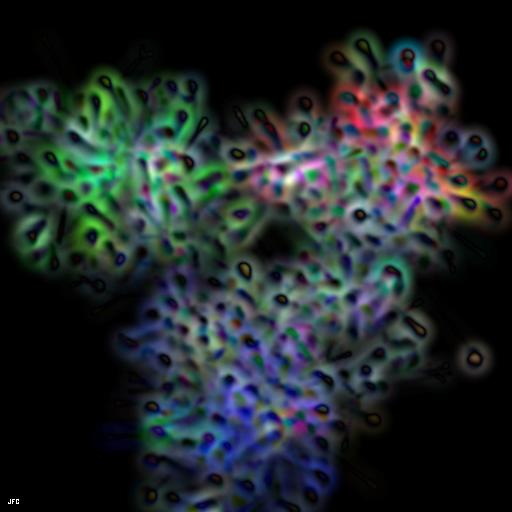
Quark and gluon structure of a nucleon
of a quadridimensional Calabi-Yau manifold
Jean Francois Colonna
CMAP, Ecole Polytechnique, CNRS
france telecom, France Telecom R&D
91128 Palaiseau Cedex France
tel = +33.(0)1.69.33.40.53
fax = +33.(0)1.69.33.30.11
Copy Permitted for Educational Purposes
Theory of Non Binary Mathmetics
Traditional binary mathmetics defines the concept of opposites as positive or negative while
the book Hyperspace suggest on page 128 in Quantum Hersey that
nature has provided 3 different types of particles
In many instances While we learned in school that positive 1 and negative 1 equal zero in the real world
an electron; added to a proton equal a hydrogen atom-not zero. Binary mathmetics explains electrons and protons as opposites but why do where do neutrons fit on
mathmetically? 3 dimensional math would seem easier to apply to multideminsional physics and if we might even
ask why not a 4th dimensional; 6th dimensional or 10th dimensional math or as Professor Michio Kaku expressed
the simpler term-Geometry?
|

Figure 6 Matter Has Color and Flavor
|

Figure 10 2 Electrons Repulse
Releases Photos
Two Electrons Did What?
Only In Quantum Physics
The book explains we can only theorize about the exact position of an electron as
it moves around the atom. Where life gets interesting is where this very tiny particle
sees another electron moving at a fantastic speed in another level and throw a
thunder bolt in the form of a photo and deflects it. Our military would love to hire
the electron towork on a project to shoot down income enemy missles. In quantum
physics and according to this idea we are inside a singularity and what occurs is
that when 1 electon gets too close to another in quantum space it shoots the photon
because this is no actual distance between them to speak of
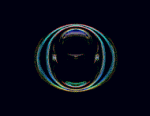
Figure 9 Quantum Entanglement
Why Quantum Entanglement Occurs
"Quantum Entanglement" involves a theory where entanglement of various particles is used in
quantum mechanics and creation of quantum computers. The theory is that electrons which
are separated by light years can interact via a process known as tunneling and entangle
although they have no meants of communciations short of violating the laws of the
speed of light. How is such a thing possible? In quantum physics the electrons are actually
colocated or sharing part of a quantum black hole or quantum do inthe same space as does
everything else in our universe. Communications is between the particles is instantaneous
becuase there is no quantum distance between the particles.
|
Three Cosmic Enigmas, one answer
(Are Blackholes Dark Energy Stars")
Public release date: 8-Mar-2006
Contact: Claire Bowles(London)
44-207-611-1210
Kyre Austin (Boston)
617-558-4939
New Scientist
Dark energy and dark matter, two of the greatest mysteries confronting physicists, may be two sides of the same coin. A new and as yet undiscovered kind of star could explain both phenomena and, in turn, remove black holes from the lexicon of cosmology.
The audacious idea comes from George Chapline, a physicist at Lawrence Livermore National Laboratory in California,
and Nobel laureate Robert Laughlin of Stanford University and their colleagues.
Last week at the 22nd Pacific Coast Gravity Meeting in Santa Barbara, California, Chapline suggested that the objects that till now have been thought of as black holes could in fact be dead stars that form as a result of an obscure quantum phenomenon. These stars could explain both dark energy and dark matter.
This radical suggestion would get round some fundamental problems posed by the existence of black holes.
One such problem arises from the idea that once matter crosses a black hole's event horizon – the point beyond which not even light can escape – it will be destroyed by the spacetime "singularity" at the centre of the black hole. Because information about the matter is lost forever, this conflicts with the laws of quantum mechanics, which state that information can never disappear from the universe.
Another problem is that light from an object falling into a black hole is stretched so dramatically
by the immense gravity there that observers outside will see time freeze: the object will appear to sit at the event
horizon for ever. This freezing of time also violates quantum mechanics. "People have been vaguely uncomfortable about these problems for a while, but they figured they'd get solved someday," says Chapline. "But that hasn't happened and I'm sure when historians look back, they'll wonder why people didn't question these contradictions."
While looking for ways to avoid these physical paradoxes, Chapline and Laughlin found some answers in an
unrelated phenomenon: the bizarre behaviour of superconducting crystals as they go through something called "quantum critical phase transition"
(New Scientist, 28 January, p 40). During this transition, the spin of the electrons in the crystals is predicted to fluctuate wildly, but this prediction
is not borne out by observation. Instead, the fluctuations appear to slow down, and even become still, as if time itself has slowed down.
"That was when we had our epiphany," Chapline says. He and Laughlin realised that if a quantum critical phase transition happened on the surface
of a star, it would slow down time and the surface would behave just like a black hole's event horizon.
Quantum mechanics would not be violated because in this scenario time would never freeze entirely. "We start with effects
actually seen in the lab, which I think gives it more credibility than black holes," says Chapline.
With this idea in mind, they – along with Emil Mottola at the Los Alamos National Laboratory in New Mexico,
Pawel Mazur of the University of South Carolina in Columbia and colleagues – analysed the collapse of massive
stars in a way that did not allow any violation of quantum mechanics. Sure enough, in place of black
holes their analysis predicts a phase transition that creates a thin quantum critical shell. The size of this shell is
determined by the star's mass and, crucially, does not contain a space-time singularity. Instead, the shell contains a vacuum, just like the energy-containing vacuum of free space. As the star's mass collapses through the shell, it is converted to energy that contributes to the energy of the vacuum.
The team's calculations show that the vacuum energy inside the shell has a powerful anti-gravity effect, just like the dark energy that appears to be causing the expansion of the universe to accelerate. Chapline has dubbed the objects produced this way "dark energy stars".
Though this anti-gravity effect might be expected to blow the star's shell apart, calculations by Francisco Lobo of the University of Lisbon in Portugal have shown that stable dark energy stars can exist for a number of different models of vacuum energy.
What's more, these stable stars would have shells that lie near the region where a black hole's event horizon would form (Classical Quantum Gravity, vol 23, p 1525).
"Dark energy stars and black holes would have identical external geometries, so it will be very difficult to tell them apart," Lobo says. "All observations used as evidence for black holes – their gravitational pull on objects and the formation of accretion discs of matter around them – could also work as evidence for dark energy stars."
That does not mean they are completely indistinguishable. While black holes supposedly swallow anything that gets past the event horizon, quantum critical shells are a two-way street, Chapline says. Matter crossing the shell decays, and the
anti-gravity should spit some of the remnants back out again. Also, quark particles crossing the shell should decay by releasing positrons and gamma rays, which would pop out of the surface.
This could explain the excess positrons that are seen at the centre of our galaxy, around the region that was hitherto thought to harbour a massive black hole. Conventional models cannot adequately
explain these positrons, Chapline says. He and his colleagues have also calculated the energy spectrum of the released gamma rays. "It is very similar to the spectrum observed in gamma-ray bursts,"
says Chapline. The team also predicts that matter falling into a dark energy star will heat up the star, causing it to emit infrared radiation. "As telescopes improve over the next decade, we'll be
able to search for this light," says Chapline. "This is a theory that should be proved one way or the other in five to ten years."
Black hole expert Marek Abramowicz at Gothenburg University in Sweden agrees that the idea of dark energy stars is worth pursuing.
"We really don't have proof that black holes exist," he says. "This is a very interesting alternative."
The most intriguing fallout from this idea has to do with the strength of the vacuum energy inside the dark energy star.
This energy is related to the star's size, and for a star as big as our universe the calculated vacuum energy inside its
shell matches the value of dark energy seen in the universe today. "It's like we are living inside a giant dark energy star,"
Chapline says. There is, of course, no explanation yet for how a universe-sized star could come into being.
At the other end of the size scale, small versions of these stars could explain dark matter. "The big bang would have created zillions of tiny dark energy stars out of the vacuum," says Chapline, who worked on this idea with Mazur. "Our universe is pervaded by dark energy, with tiny dark energy stars peppered across it." These small dark energy stars would behave just like dark matter particles: their gravity would tug on the matter around them, but they would otherwise be invisible.
Abramowicz says we know too little about dark energy and dark matter to judge Chapline and Laughlin's idea, but he is not dismissing it out of hand. "At the very least we can say the idea isn't impossible."
### "This article is posted on this site to give advance access to other authorised media who may wish to quote
extracts as part of fair dealing with this copyrighted material. Full attribution is required, and if
publishing online a link to www.newscientist.com is also
required. http://www.newscientist.com
UK CONTACT - Claire Bowles, New Scientist Press Office, London: Tel: +44(0)20 7611 1210 or email claire.bowles@rbi.co.uk
US CONTACT – New Scientist Boston office: Tel: +1 617 386 2190 or email kyre.austin@reedbusiness.com
|

Nobel Laureate Robert Laughlin
Stanford University
LAM, Room 342
McCullough Bldg
476 Lomita Mall
Stanford CA 94305-4045
tel 650-723-4563
fax 650-723-9389
|

Figure 11 Brane Theory Strings On Holographic Brane
Professor Lisa Randall, Ph.D.
Harvard University
Department of Physics
Cambridge, MA, USA
Explanation of Holographic
Nature of Brane Theory
The Brane Theory an interesting article by
Dr. Lisa Randall PHD. Is it possibile that our universe is actually a membrane
supported by a multidimensions mechanism or a sort of holographic projection. In this
idea of the universe as existing inside the event horizon of a black hole our reality
is a sort of 2 dimensional holographic projection supported by the singularity

Figure 12-Speculation On Power Source
14 Times Greater Than Universe
Nearby Power Source With 14 Times
Energy of Our Universe
One recent article in August 2005-Discover Magazine on the String Theory explains that scientist have
located a large power source with 14 times the energy and mass of our entire universe and
wondered what this mysterious "Borgian" entity is? If our universe is inside a black hole
it is possible that the large nearby energy source being cited in actually a large
companion star which exist beyond the "Event Horizon"

Citing Hugh Senior Member
At Professor Michau Kaku Forums
On Structure of Space
& Blackholes/Wormholes
Press To Enlarge
Is Space 3 Dimensional?
This link asks an interesting question as to
wheather space is 3 dimensional which is answered at the Professor Michio Kaku discussion forums

Strings as Electric Rubber Bands
Dr. Green @ Elegant Universe-At Nova
The Elegant Universe
& String Theory
Professor Brian Green appears at Nova and does an
extensive review of his book The Elegant Universe. An indepth review of the string theory
which is online and was features on PBS and Nova. The Photo above shows the
string as an electric rubber band. For those of interested in the string theory this is an excellent place to begin our research.

Wave Packet of Electron
Professor Carols R Stroud Jr.
The Institute of Optics
University of Rochester
Wilmot 312
275 Hutchison Rd
Rochester, NY 14627-0186
(585) 275-2598
Fax: (585) 244-4936
The Wave Packet Theory
Link to Page 2
This link goes to page two on the string theory;
wave packet theory of matter and other questions in physics
|

Professor Michio Kaku
On Discovery Channel
Sunday Jan 28, 1006 8PM
Academic Discussions
Link to Page 3
This link are replies from various parties
on our academic endeavors.

Citation of Authority
Academic Exemption & Disclaimer
Title 17 USC 107 Fairuse Exception
This is an educational activity involving academic research as defined
by Title 17 USC Sec. 107. Limitations
on exclusive rights: Fair use and citation of authorities and use of photos is permitted
by statute. Chris Walters is a layman doing some theorizing based on information which is published
by noted and highly respected Physics Professors which are cited below. If all the ideas
and theories are wrong or not correctly presented it is obviously the fault of the
author who shrugs and like everyone else moves on and says nothing ventured nothing
gained
|

The Search for Superstrings,
Symmetry, and the Theory of everything
|

By Professor John Gribbin
University of Sussex
Department of Physics and Astronomy
University of Sussex
Brighton East Sussex BN1 9QH
Location: ARUNDEL BUILDING 233
Tel: 01273 678557
Fax: 01273 873124
International: +44 1273 678069 or
+44 1273 678557
|
Professor Walters is a Rhodes Scholar or should I say Highway Scholar whose
first paper was on multiple universes
of social services in the western US. The theory of entanglement came during the course of research and the difficulty
of trying to get away from this field or research where you can become a permanent fixture. Professor Walter's next
discovery involved preventing the release of massive amounts of energy through this interdimensional riff
where some politician seriously considered amending social security. How does Professor Puddin Head a High School grad with a C average in Algebra resolve exotic problems in theoritical physics? If you can explain
a problem without the mathmetics down to the layman's level Professor Walters can convince those involved they already knew
the answer but didn't realize it.
|

